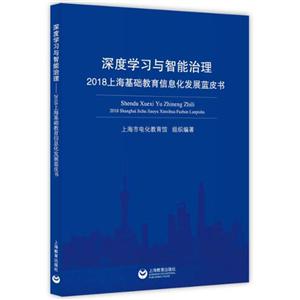图像分析中的模型和逆问题

|
图像分析中的模型和逆问题作者:查蒙德 开 本:24开 书号ISBN:9787510070198 定价:59.0 出版时间:2014-11-01 出版社:世界图书出版公司 |
图像分析中的模型和逆问题 本书特色
this book fulfills a need in the field of computer science research and education. it is not intended for professional mathematicians, but it undoubtedly deals with applied mathematics. most of the expectations of the topic are fulfilled: precision, exactness, completeness, and excellent references to the original historical works. however, for the sake of read-ability, many demonstrations are omitted. it is not a book on practical image processing, of which so many abound, although all that it teaches is directly concerned with image analysis and image restoration. it is the perfect resource for any advanced scientist concerned with a better un-derstanding of the theoretical models underlying the methods that have efficiently solved numerous issues in robot vision and picture processing.
图像分析中的模型和逆问题 目录
foreword by henri maitreacknowledgmentslist of figuresnotation and symbols1 introduction 1.1 about modeling 1.1.1 bayesian approach 1.1.2 inverse problem 1.1.3 energy-based formulation 1.1.4 models 1.2 structure of the book spline models2 nonparametrie spline models 2.1 definition 2.2 optimization 2.2.1 bending spline 2.2.2 spline under tension 2.2.3 robustness 2.3 bayesian interpretation 2.4 choice of regularization parameter 2.5 approximation using a surface 2.5.1 l-spline surface 2.5.2 quadratic energy 2.5.3 finite element optimization3 parametric spline models 3.1 representation on a basis of b-splines 3.1.1 approximation spline 3.1.2 construction of b-splines 3.2 extensions 3.2.1 multidimensional case 3.2.2 heteroscedasticity 3.3 high-dimensional splines 3.3.1 revealing directions 3.3.2 projection pursuit regression4 auto-associative models 4.1 analysis of multidimensional data 4.1.1 a classical approach 4.1.2 toward an alternative approach 4.2 auto-associative composite models 4.2.1 model and algorithm 4.2.2 properties 4.3 projection pursuit and spline smoothing 4.3.1 projection index 4.3.2 spline smoothing 4.4 illustrationⅱ markov models5 fundamental aspects 5.1 definitions 5.1.1 finite markov fields 5.1.2 gibbs fields 5.2 markov-gibbs equivalence 5.3 examples 5.3.1 bending energy 5.3.2 bernoulli energy 5.3.3 gaussian energy 5.4 consistency problem6 bayesian estimation 6.1 principle 6.2 cost functions 6.2.1 cost b-hnction examples 6.2.2 calculation problems7 simulation and optimization 7.1 simulation 7.1.1 homogeneous markov chain 7.1.2 metropolis dynamic 7.1.3 simulated gibbs distribution 7.2 stochastic optimization 7.3 probabilistic aspects 7.4 deterministic optimization 7.4.1 icm algorithm 7.4.2 relaxation algorithms8 parameter estimation 8.1 complete data 8.1.1 maximum likelihood 8.1.2 maximum pseudolikelihood 8.1.3 logistic estimation 8.2 incomplete data 8.2.1 maximum likelihood 8.2.2 gibbsian em algorithm 8.2.3 bayesian calibration ⅲ modeling in action9 model-building 9.1 multiple spline approximation 9.1.1 choice of data and image characteristics 9.1.2 definition of the hidden field 9.1.3 building an energy 9.2 markov modeling methodology 9.2.1 details for implementation10 degradation in imaging 10.1 denoising 10.1.1 models with explicit discontinuities 10.1.2 models with implicit discontinuities 10.2 deblurring 10.2.1 a particularly ill-posed problem 10.2.2 model with implicit discontinuities 10.3 scatter 10.3.1 direct problem 10.3.2 inverse problem 10.4 sensitivity functions and image fusion 10.4.1 a restoration problem 10.4.2 transfer function estimation 10.4.3 estimation of stained transfer function11 detection of filamentary entities 11.1 valley detection principle 11.1.1 definitions 11.1.2 bayes-markov formulation 11.2 building the prior energy 11.2.1 detection term 11.2.2 regularization term 11.3 optimization 11.4 extension to the case of an image pair12 reconstruction and projections 12.1 projection model 12.1.1 transmission tomography 12.1.2 emission tomography 12.2 regularized reconstruction 12.2.1 regularization with explicit discontinuities 12.2.2 three-dimensional reconstruction 12.3 reconstruction with a single view 12.3.1 generalized cylinder 12.3.2 training the deformations 12.3.3 reconstruction in the presence of occlusion13 matching 13.1 template and hidden outline 13.1.1 rigid transformations 13.1.2 spline model of a template 13.2 elastic deformations 13.2.1 continuous random fields 13.2.2 probabilistie aspectsreferencesauthor indexsubject index
自然科学 数学 数学理论
在线阅读
- 最新内容
- 相关内容
- 网友推荐
- 图文推荐
| [高考] 2022 西安电子科技大学《软件工程》大作业答案 (2022-04-25) |
| [家长教育] 孩子为什么会和父母感情疏离? (2019-07-14) |
| [教师分享] 给远方姐姐的一封信 (2018-11-07) |
| [教师分享] 伸缩门 (2018-11-07) |
| [教师分享] 回家乡 (2018-11-07) |
| [教师分享] 是风味也是人间 (2018-11-07) |
| [教师分享] 一句格言的启示 (2018-11-07) |
| [教师分享] 无规矩不成方圆 (2018-11-07) |
| [教师分享] 第十届全国教育名家论坛有感(二) (2018-11-07) |
| [教师分享] 贪玩的小狗 (2018-11-07) |






